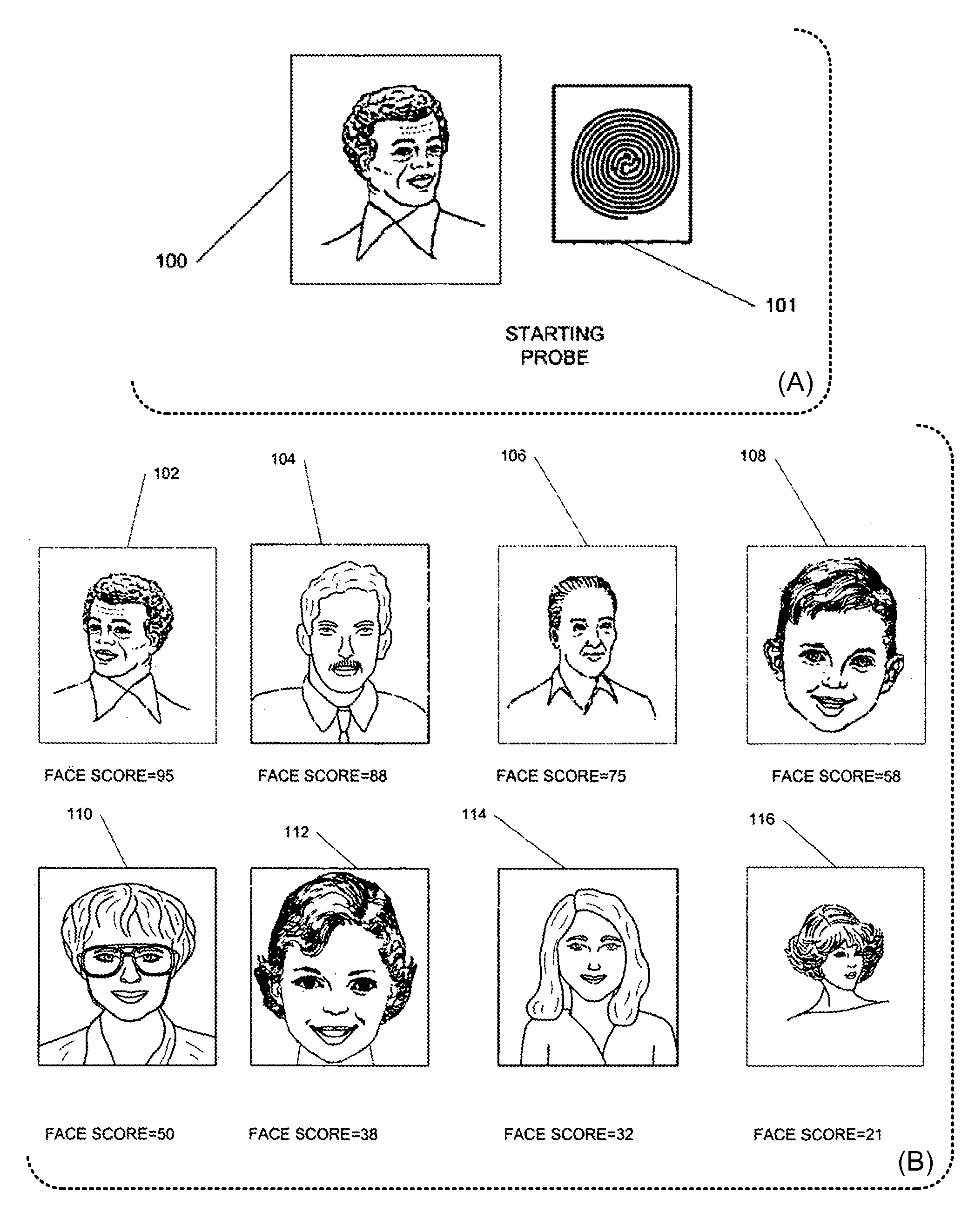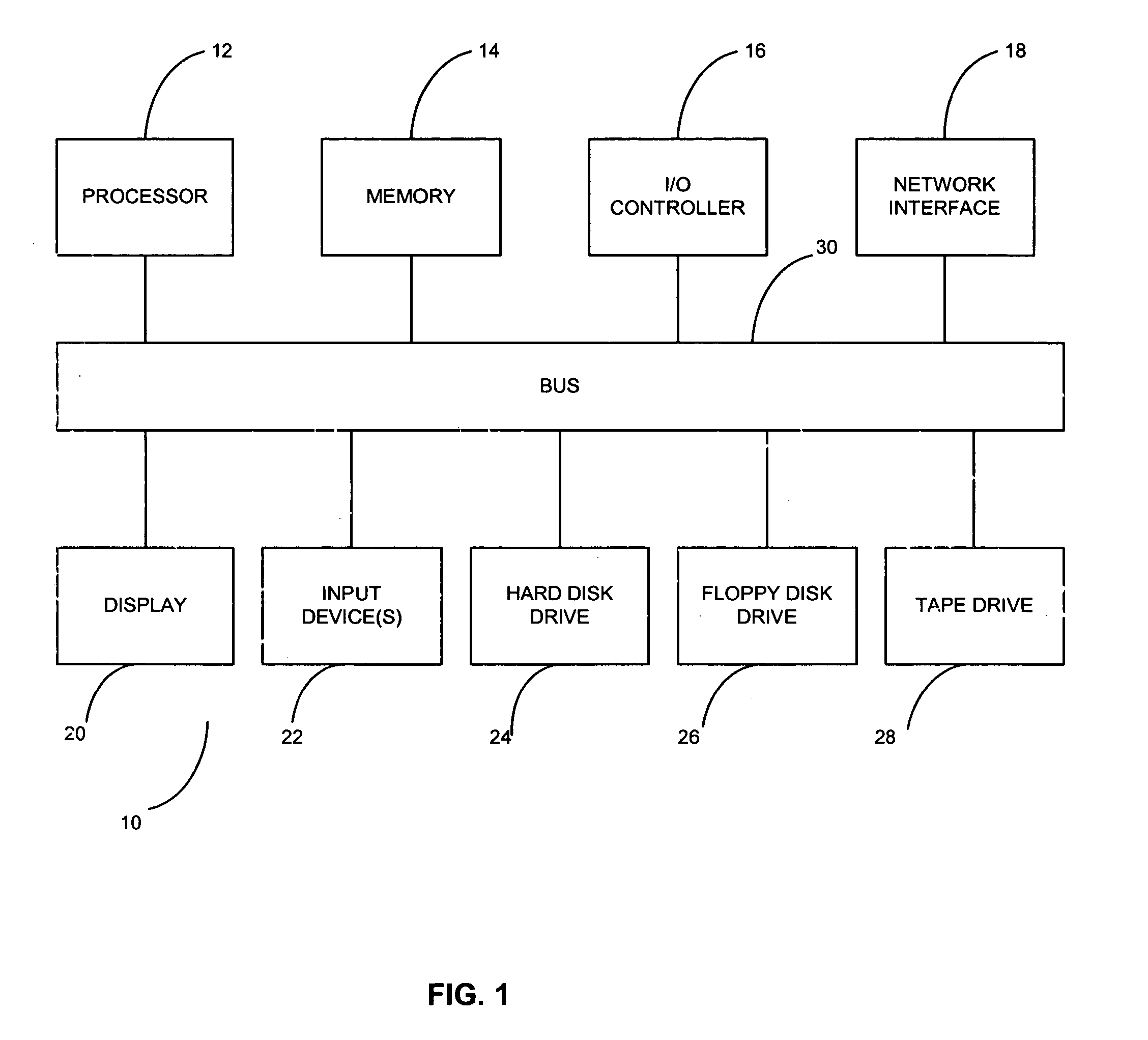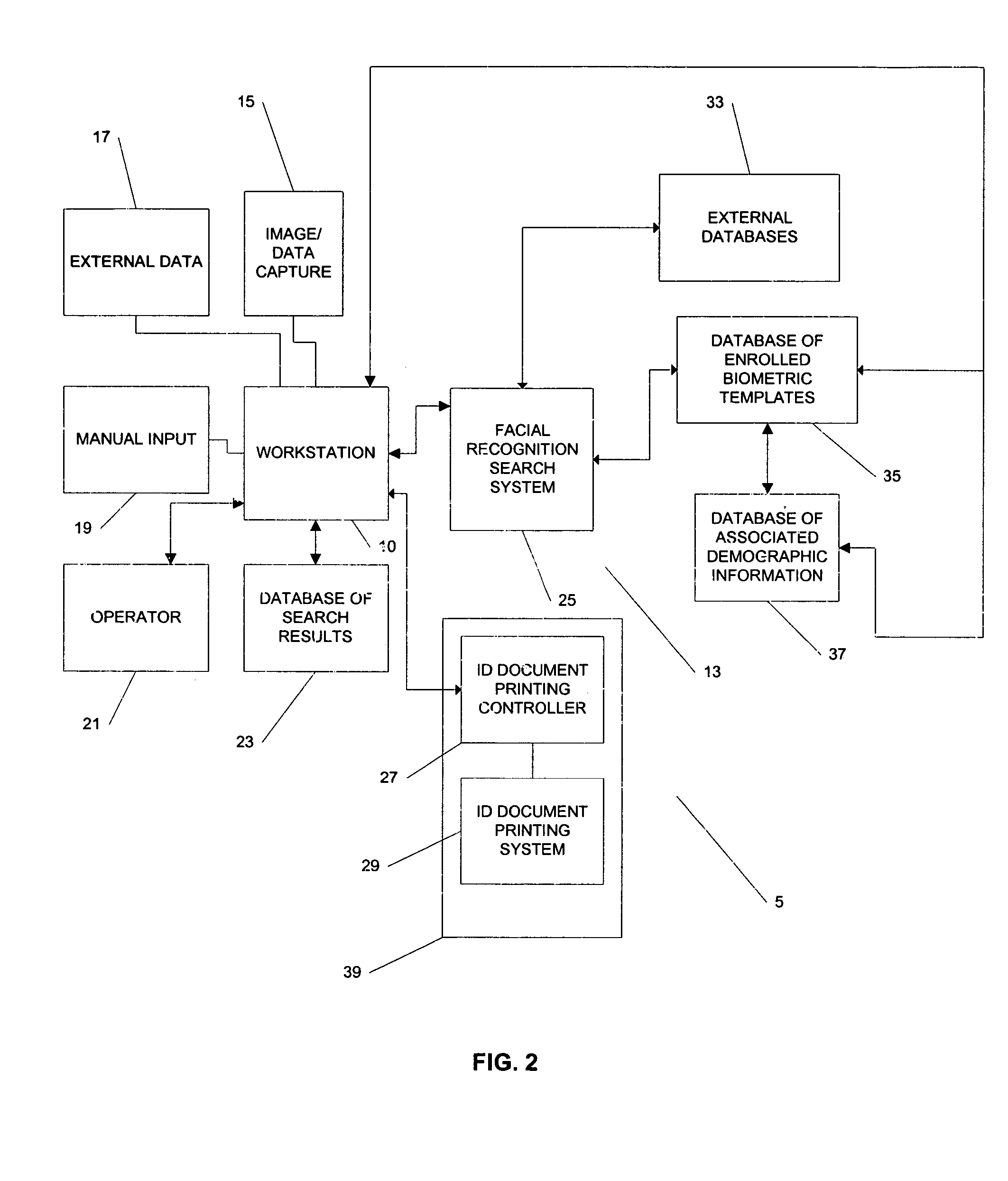Systems and methods for managing and detecting fraud in image databases used with identification documents
a technology of image databases and fraud detection, applied in document management systems, instruments, individual entry/exit registers, etc., can solve problems such as identity theft and other related fraudulent identification activities, which can be a major problem to the economy, safety and stability of the united states, and create wholly false identification documents
- Summary
- Abstract
- Description
- Claims
- Application Information
AI Technical Summary
Benefits of technology
Problems solved by technology
Method used
Image
Examples
first embodiment
[0131]FIG. 2 is an illustrative block diagram of a system implemented in accordance with the invention. Referring to FIG. 2, the following elements are provided.
[0132]FIG. 2 is a block diagram of a first system 5 for biometric searching, in accordance with one embodiment of the invention. The system 5 includes a workstation 10 (such as the one described more fully in FIG. 1) which is capable of receiving inputs from a number of sources, including image and / or data capture systems 15, external data systems 17 (such as remote clients in communication with the workstation 10 and / or which conduct searches using the workstation 10, data acquisition devices such as scanners, palm top computers, etc.), manual inputs 19 (which can be provided locally or remotely via virtually any input device, such as a keyboard, mouse, scanner, etc.), and operator inputs 21 (e.g., voice commands, selections from a menu, etc.). In one embodiment, the workstation in this embodiment is programmed convert capt...
second embodiment
[0149]FIG. 3 is a block diagram of a system 50 for biometric searching in accordance with the invention. Note that in the following discussion, all references to particular brands and / or suppliers (e.g., Digimarc, Visionics) are provided by way of illustration and example only and are not limiting. Those skilled in the art can appreciate that other products from other suppliers having equivalent functionality and / or features can, of course, be substituted.
[0150]System Overview
[0151]In this embodiment, images in digital form are captured periodically (e.g., daily) by an issuing party, such as a DMV. The captured digital images are enrolled in a specialized Identification Fraud Prevention Program (IDFPP) facial recognition database which makes it possible to search the database and find matches using only pictures. Enrollment is a numerical process which reduces facial characteristics to a series of numbers called a template. The IDFPP manages the periodic (e.g., daily) batches of ima...
third embodiment
[0181]FIG. 4 is a block diagram of a first system for biometric searching 70, in accordance with the invention. Note that elements of the system of FIG. 4 that have common names and / or functions to the systems of FIGS. 2 and 3 (e.g., “investigator workstation”) can, in at least one embodiment, be implemented using the same hardware and / o software described previously, and these elements, in at least some embodiments, operate similarly to their namesakes in FIGS. 2 and 3. Of course, the names provided here are not limiting.
[0182]Referring again to FIG. 4, the first system for biometric searching 70 includes a photo validation system (PVS) 91 (also referred to herein as an identification fraud prevention system (IDFPP) 91) and a facial recognition search subsystem 52. The photo validation system 91 includes an investigator workstation 56, image / person server 72, an image / person database (DB) 74, a data entry workstation 76, a non template face data server 78, a non template face data ...
PUM
 Login to View More
Login to View More Abstract
Description
Claims
Application Information
 Login to View More
Login to View More - R&D
- Intellectual Property
- Life Sciences
- Materials
- Tech Scout
- Unparalleled Data Quality
- Higher Quality Content
- 60% Fewer Hallucinations
Browse by: Latest US Patents, China's latest patents, Technical Efficacy Thesaurus, Application Domain, Technology Topic, Popular Technical Reports.
© 2025 PatSnap. All rights reserved.Legal|Privacy policy|Modern Slavery Act Transparency Statement|Sitemap|About US| Contact US: help@patsnap.com



